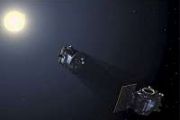
Copernical Team
SpaceX launches military weather satellite into orbit
 SpaceX launched its second national security mission of 2024 on Thursday with a Falcon 9 rocket lifting the U.S. Space Force mission USSF-62 into orbit.
The mission took off from California's Vandenberg Space Force Base at 10:25 a.m. EDT. The mission sends a Weather System Follow-on Microwave satellite, or WSF-M, to low Earth orbit.
BAE Systems said it "will provide critical and
SpaceX launched its second national security mission of 2024 on Thursday with a Falcon 9 rocket lifting the U.S. Space Force mission USSF-62 into orbit.
The mission took off from California's Vandenberg Space Force Base at 10:25 a.m. EDT. The mission sends a Weather System Follow-on Microwave satellite, or WSF-M, to low Earth orbit.
BAE Systems said it "will provide critical and Russian rocket lifts off at third attempt
 A Russian rocket blasted off for a test flight on Thursday at the third try, after previous launch attempts earlier this week were aborted in the final seconds of countdown.
The flagship Angara A5 - a powerful spacecraft designed to carry heavy payloads into low Earth orbit - took off from the Vostochny Cosmodrome in the Russian Far East, a live broadcast showed.
"The rocket worked acc
A Russian rocket blasted off for a test flight on Thursday at the third try, after previous launch attempts earlier this week were aborted in the final seconds of countdown.
The flagship Angara A5 - a powerful spacecraft designed to carry heavy payloads into low Earth orbit - took off from the Vostochny Cosmodrome in the Russian Far East, a live broadcast showed.
"The rocket worked acc Kennedy Space Center Enhances Altitude Chamber for Artemis II Spacecraft Trials
 As NASA prepares for the Artemis II mission, the Orion spacecraft is set for extensive testing to ensure its readiness for lunar exploration. Engineers at Kennedy Space Center have recently upgraded the altitude chamber used for these tests. The upgrades were made in anticipation of the testing phase, ensuring the spacecraft endures conditions similar to those
As NASA prepares for the Artemis II mission, the Orion spacecraft is set for extensive testing to ensure its readiness for lunar exploration. Engineers at Kennedy Space Center have recently upgraded the altitude chamber used for these tests. The upgrades were made in anticipation of the testing phase, ensuring the spacecraft endures conditions similar to those NASA continues Artemis program amid advancements in Starship program at SpaceX
 As the race to the Moon intensifies, NASA's Artemis program and SpaceX's Starship represent two pivotal, yet distinct approaches to lunar exploration. Despite the emergence of cost-effective alternatives like SpaceX's Starship, NASA is moving forward with Artemis, underscoring its strategic, multi-faceted mission objectives beyond mere cost considerations.
NASA's Artemis program is laser-f
As the race to the Moon intensifies, NASA's Artemis program and SpaceX's Starship represent two pivotal, yet distinct approaches to lunar exploration. Despite the emergence of cost-effective alternatives like SpaceX's Starship, NASA is moving forward with Artemis, underscoring its strategic, multi-faceted mission objectives beyond mere cost considerations.
NASA's Artemis program is laser-f Wireless power transmission could enable exploration of the far side of the moon
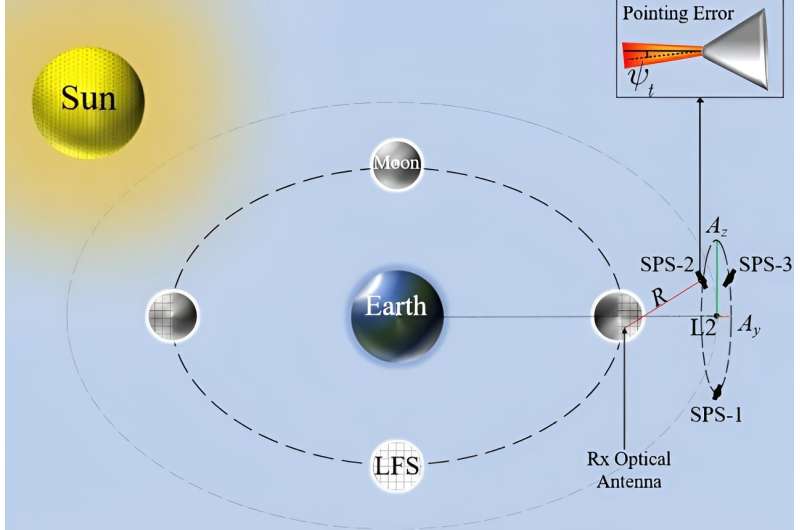
How can future lunar exploration communicate from the far side of the moon despite never being inline with the Earth? This is what a recent study submitted to IEEE Transactions on Aerospace and Electronic Systems hopes to address as a pair of researchers from the Polytechnique Montréal investigated the potential for a wireless power transmission method (WPT) comprised of anywhere from one to three satellites located at Earth-moon Lagrange Point 2 (EMLP-2) and a solar-powered receiver on the far side of the moon.
NASA technology helps guard against lunar dust
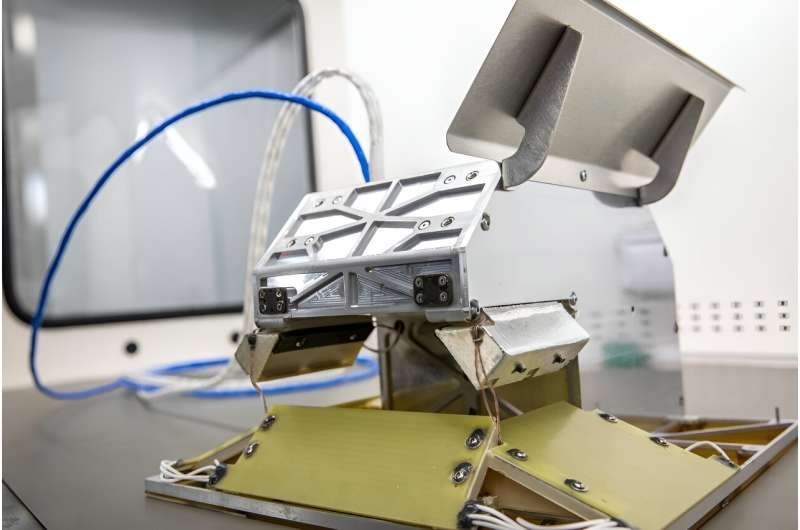
Defeating dust may be a small concern for most people on Earth, but for astronauts and spacecraft destined for the moon or Mars, it is a significant hazard that must be mitigated.
Examining the blowtorch effect of satellite reentry through video
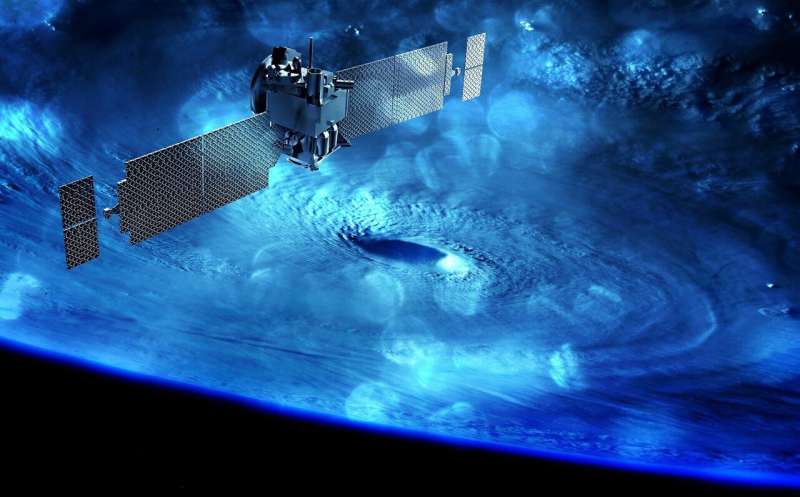
A reaction wheel—one of the heaviest parts of a space mission, its changing rotation used to shift a satellite's orientation—seen in a plasma wind tunnel belonging to the High Enthalpy Flow Diagnostics Group (HEFDiG) at the University of Stuttgart Institute of Space Systems (IRS). Arc-heated gas in the test chamber reaches speeds of several kilometers per second, reproducing reentry conditions, while the reaction wheel itself is being rotated, reproducing the tumbling that takes place as a satellite plunges through the atmosphere.
The reaction wheel itself comes from Collins Aerospace in Germany, which has supported Design for Demise (D4D) activities for many years and introduced several modifications to their TELDIX reaction wheel, making it more likely to come apart during satellite reentry in support of demisability.
This clip was presented during this year's Space Mechanisms Workshop at ESA's ESTEC technical center in the Netherlands and focused on current and future requirements and guidelines to reduce the risk from orbital debris, including ESA's Zero Debris Charter. The event was attended by more than 130 space mechanisms specialists from European industry and academia.
Artemis II Orion in all its glory
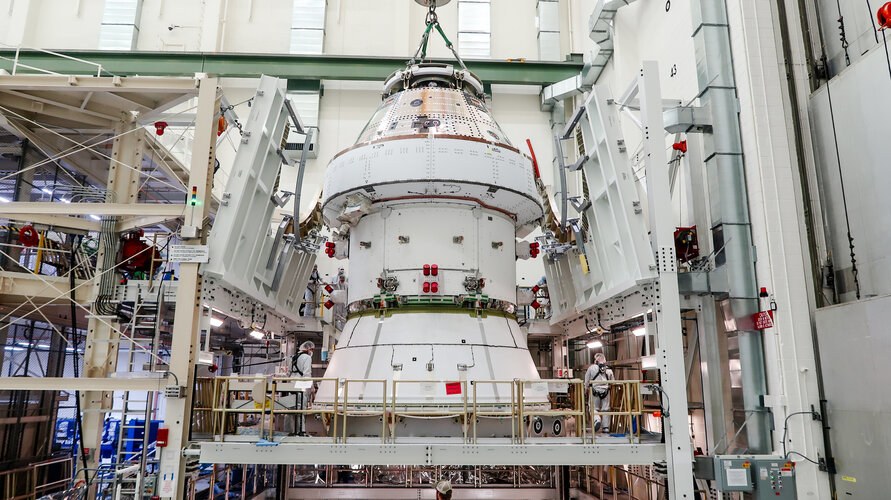 Image:
Image:
At NASA’s Kennedy Space Center in Florida, USA, the Orion vehicle that will be used for Artemis II is getting ready for this first mission to bring humans around the Moon and back in over 50 years.
The vehicle consists of several parts: the conical crew module on top, where the four astronauts will live during the mission; the crew module adapter directly beneath it, connecting the crew module above and service module below; the cylindrical European Service Module, the powerhouse of Orion providing the crew vehicle with electricity, propulsion, thermal control, air and water; and the conical spacecraft adaptor,
Hera and its CubeSats at Didymos system
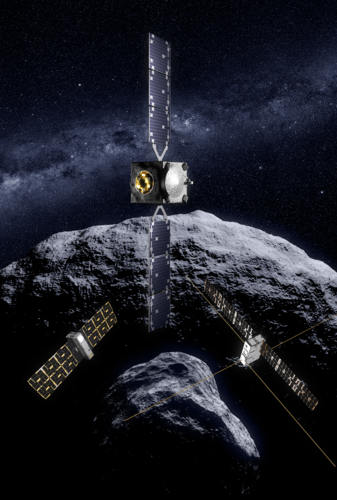 Image:
Hera and its CubeSats at Didymos system
Image:
Hera and its CubeSats at Didymos system Astro Chat with Sophie Adenot | ESA Explores podcast
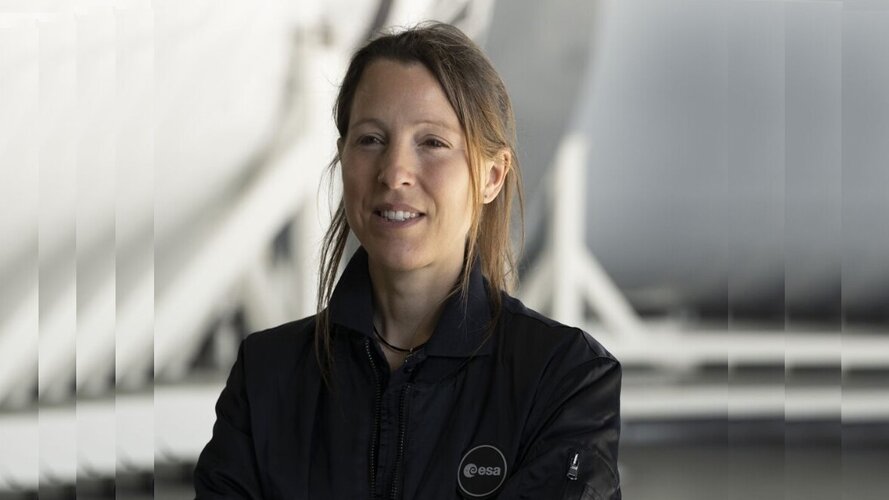 Video:
00:27:08
Video:
00:27:08
Sophie Adenot is one of ESA's five astronaut candidates currently undergoing basic astronaut training at the European Astronaut Centre in Cologne, Germany. Tune in as she shares her experiences in astronaut training, her favourite lessons, as well as tips on maintaining the balance and achieving your dreams.
This is Episode 6 of our ESA Explores podcast series introducing the ESA astronaut class of 2022, recorded in November 2023.
Music and audio editing by Denzel Lorge. Cover art by Gaël Nadaud.































